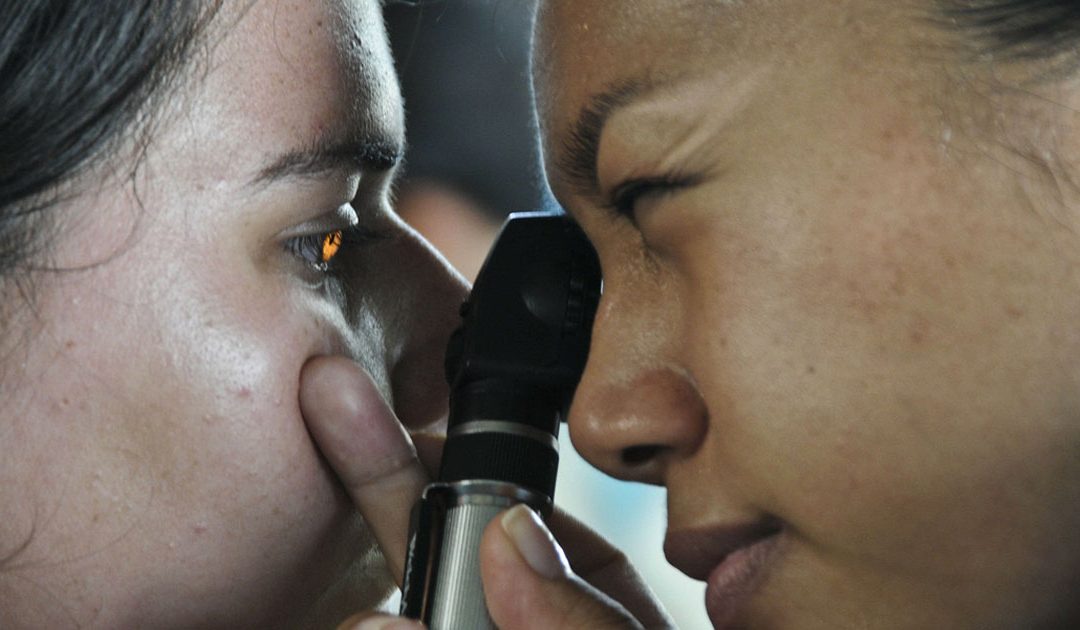Aging and vision loss
By Arvind M. Dhople, Ph.D., Professor Emeritus, Florida Tech
Age sometimes brings changes that weaken your vision and eyes, but you can do certain things to maintain lifelong eye and overall health. Vision loss among the elderly is a major health care problem. Approximately one person in three has some form of vision-reducing eye disease by the age of 65. The most common causes of vision loss among the elderly are age-related macular degeneration, glaucoma, cataract and diabetic retinopathy.
Eye health and vision have widespread and profound implications for many aspects of life, health, sustainable development and the economy. Yet now-a-days, many people, families, and populations continue to suffer the consequences of poor access to high-quality, affordable eye care, leading to vision impairment and blindness.
In 2020, an estimated 596 million people had distance vision impairment worldwide (including 42 million people in the U.S.), of whom 43 million were blind (with 4.1 million in the U.S.). Another 510 million people had had uncorrected near vision impairment, simply because of not having reading spectacles. A large proportion of these affected (90%), live in low-income and middle-income countries. With an aging global population, vision impairment has risen to the forefront public health concern.
Over the past 30 years there have been important changes in the leading causes of vision loss. Infectious causes such as trachoma and onchocerciasis have declined, whereas chronic eye diseases such as glaucoma, age-related macular degeneration, and diabetic retinopathy now account for a greater proportion of blindness and vision impairment globally.
This epidemiological transition necessitates a refocused public health and clinical response. Vision needs to be recognized as a key part of overall health. There is mounting evidence indicating that vision loss affects more than how people see, and has implications for physical, cognitive, and mental health, and can exacerbate inequities in employment, health-care access, and income. As a result, research cannot be limited to prevention, treatment, and cures, because there is an urgent need to identify strategies that will equitably maximize the health and opportunities of people with vision impairment as they age.
The role that society plays in the interaction between vision and aging also cannot be ignored. Aging research has increasingly adopted the perspective that society and the environment shape health and wellbeing; however, this perspective has not been as comprehensively integrated into vision and eye health research. However, there remains a gap in connecting these efforts to achieve health equity and strengthen human rights for people aging with vision loss.
Eye care needs to be included as a crucial component of health care for older adults. Vision and eye health are often not well integrated within primary health and prevention strategies in efforts to improve health-care outcomes, quality, and safety or when developing health interventions and behavioral change programs. Because the prevalence of vision loss increases with age, these areas represent missed opportunities to optimize the health and wellbeing of older adults.
Collaboration is key to meeting these challenges. Research that brings gerontological principles and expertize on eye health issues is needed to identify and address health inequities that arise as people age with vision impairment. These cross-disciplinary collaborations can create new opportunities for data use, innovative research methods, and crucial holistic perspectives on the impact of vision loss during the whole lifespan. For evidence to become action, vision researchers need to disseminate results for communities with a focus on aging, and vice versa.
The high prevalence of vision loss at older ages, and its impact on health, wellbeing, and existing inequities remains substantial, and will increase as the global population ages. Accordingly, the eye care and aging communities need to come together to recognize that our world will only truly be aging friendly once it is vision friendly.


Recent Comments